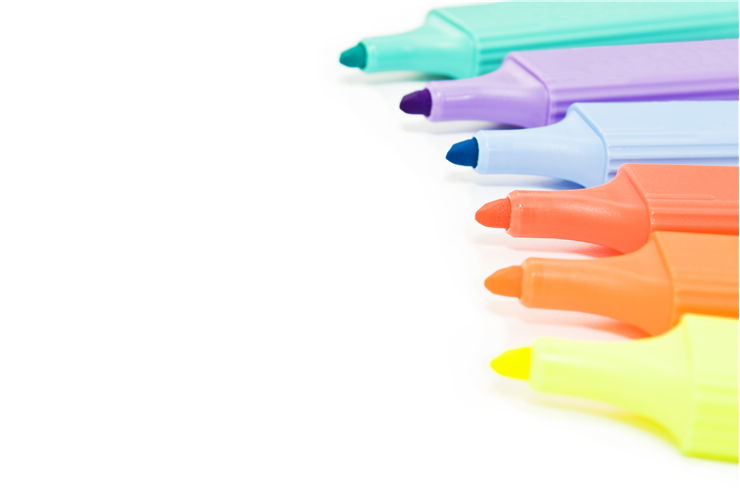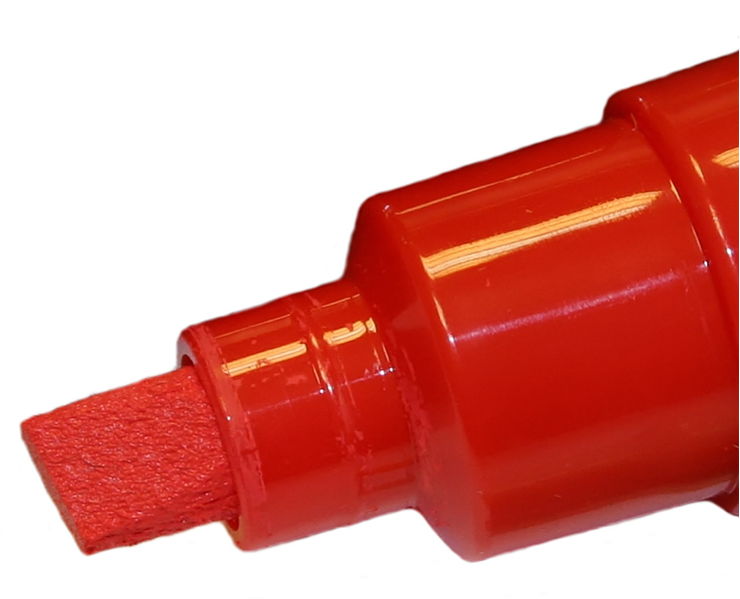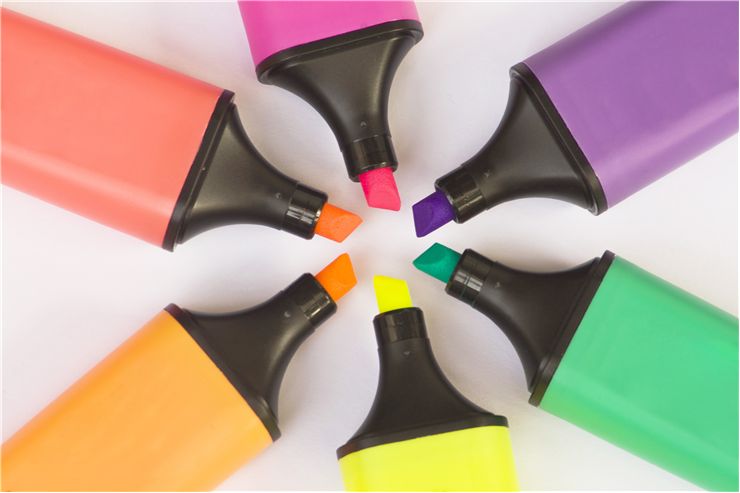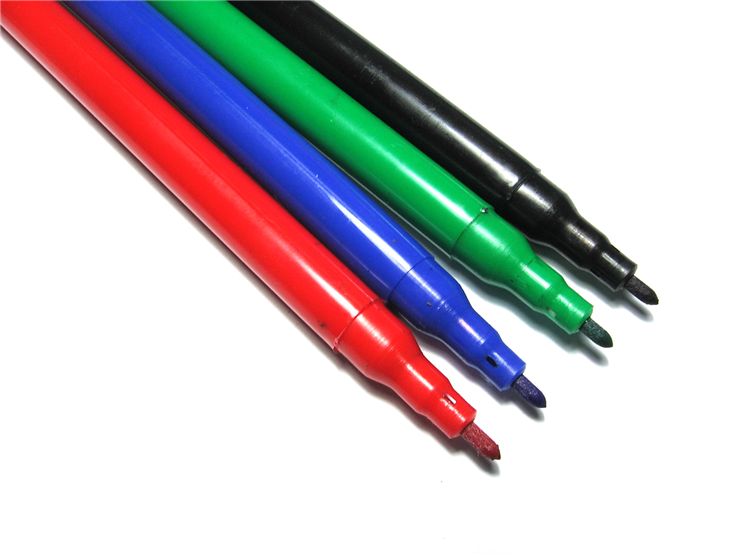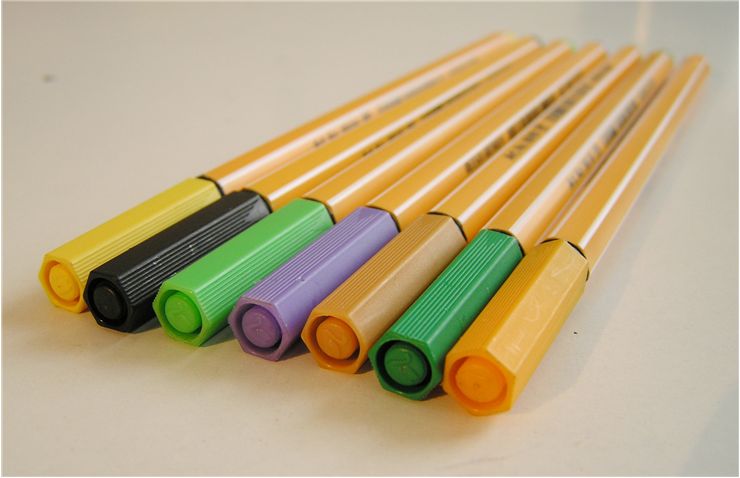History of Marker Pens
The marker pen is a pen that has a tip made of porous, pressed fibers (felt) and a reservoir of colored ink. This reservoir has a core of an absorbent material that carries the ink. One more necessary part of a marker is a cap that prevents the drying of ink in a nib. The marker's ink has a solvent that keeps it in liquid form. Until the 1990s, that solvent was toluene or xylene. These solvents are harmful, and because of that, we use alcohol today instead.
The first felt-tip marking pen was patented in 1910 by Lee Newman. It was a cylinder filled with ink that led to a felt tip. Benjamin Paskach patented his “fountain paintbrush" in 1926. It had a sponge-tipped handle and was filled with different paint colors. These marker pens were not commercially viable and didn’t sell. In 1944, Walter J. De Groft patented a "marking pen" that held ink in liquid form in its handle and used a felt tip. This patent became a “Sharpie” pen in 1964. The first modern (and usable) marker pen was Sidney Rosenthal's “Magic Marker,” which he invented and started selling in 1953. This marker had a glass tube of ink for a body, and a felt wick and its name comes from the fact that it could write on any surface. Yukio Horie of the Tokyo Stationery Company invented a modern fiber-tipped pen in 1962.
Highlighters and fine-line markers appeared in the 1970s. Binney & Smith, who made Crayola, bought “Magic Marker” in 1989 and started selling improved permanent markers and highlighters. In 1996 they started selling Magic Marker II and dry-erase markers for writing on whiteboards and glass.
Different types of markers are made of various materials for different purposes and behave differently. “Permanent markers” can write on many different surfaces like glass, plastic, wood, metal, and stone. Their ink lasts long and often cannot be removed from the surface by rubbing or water. Depending on the surface on which it is used, ink can be removed with alcohol or acetone. “Highlighters” are semi-transparent permanent markers that are used to draw attention to sections of text (to “highlight” them). They are used over existing writing but still leave the writing readable. They are often made in bright, fluorescent colors (the most often color being fluorescent yellow, colored with pyranine).
“Non-permanent markers” (also known as “dry-erase markers” or “whiteboard markers”) are markers that, when applied to the surface, dry very fast and do not stick to the surface too strongly, so when they are erased, with a dry sponge or cloth, they turn into dust. They are made of erasable ink on slick, non-porous writing surfaces like whiteboards and foils for overhead projectors. “Wet-wipe markers” or “wet-erase markers” are similar to dry-erase markers but are more resilient to wiping and must be cleaned with a wet cloth or sponge. "Security markers” have invisible inks that are fluorescent under UV light. They are used for marking valuables as protection in case of burglary. “Election markers” are similar to security markers. They have “election ink,” which is invisible until exposed to UV light. Its purpose is to prevent double voting in countries where identification documents for citizens are not always standardized or institutionalized. It is applied on the forefinger of the left hand and stays for a week or two. “Porous point pens” have points made of some porous material. This material is often felt or ceramic. Ceramics is especially suitable because it does not lose a tip under pressure and lasts longer.
